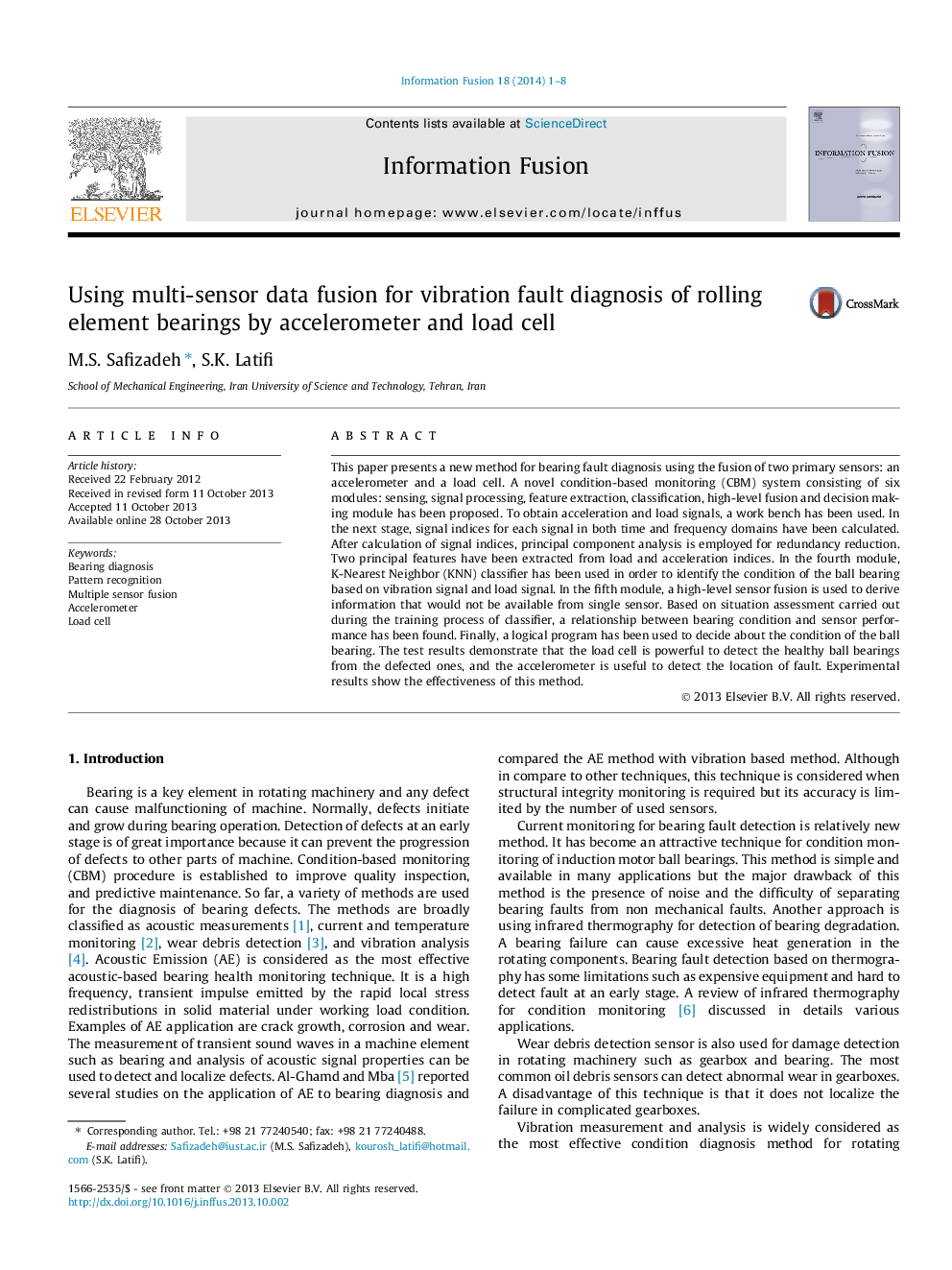| Article ID | Journal | Published Year | Pages | File Type |
|---|---|---|---|---|
| 528756 | Information Fusion | 2014 | 8 Pages |
This paper presents a new method for bearing fault diagnosis using the fusion of two primary sensors: an accelerometer and a load cell. A novel condition-based monitoring (CBM) system consisting of six modules: sensing, signal processing, feature extraction, classification, high-level fusion and decision making module has been proposed. To obtain acceleration and load signals, a work bench has been used. In the next stage, signal indices for each signal in both time and frequency domains have been calculated. After calculation of signal indices, principal component analysis is employed for redundancy reduction. Two principal features have been extracted from load and acceleration indices. In the fourth module, K-Nearest Neighbor (KNN) classifier has been used in order to identify the condition of the ball bearing based on vibration signal and load signal. In the fifth module, a high-level sensor fusion is used to derive information that would not be available from single sensor. Based on situation assessment carried out during the training process of classifier, a relationship between bearing condition and sensor performance has been found. Finally, a logical program has been used to decide about the condition of the ball bearing. The test results demonstrate that the load cell is powerful to detect the healthy ball bearings from the defected ones, and the accelerometer is useful to detect the location of fault. Experimental results show the effectiveness of this method.
•Application of data fusion to bearing diagnosis.•Bearing fault detection by two methods, vibration measurement and load measurements.•Promising improvement in accuracy and reliability of bearing fault diagnosis.•Proposing waterfall fusion model with excellent performance in bearing diagnosis.
